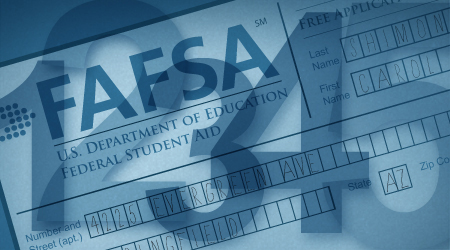When it comes time to apply to colleges, too often students and their families dismiss the idea of applying for financial aid. The reasons for this are varied, but a study by Mark Kantrowitz (college financial aid guru and founder of www.finaid.org) showed that the top 5 reasons that students don’t apply for financial aid are as follows:
1. They thought they were ineligible (60.7%.)
2. They had no financial need (50.6%.)
3. They did not want to take on the debt by incurring loans (40.2%.)
4. They had no information on how to apply (22.9%.)
5. They thought that the forms were too much work (18.9%.)
The first three reasons accounted for 92.2% of the non-applicants.
In the face of these statistics, I’d like to point out 4 reasons that every student should apply for financial aid (or at least fill out the Free Application for Federal Student Aid –FAFSA.)
1. You just might be wrong about not qualifying.
From the above study, more than half of those who had thought themselves ineligible would have, in fact, qualified for some need-based aid. While every school evaluates need differently, and there are no hard and fast rules about “income gates” that determine aid eligibility, there are a couple of good rules-of-thumb to consider. The first is that a family’s Expected Family Contribution (EFC) will generally be about 25-35% of Adjusted Gross Income (AGI). Secondly, according to Kantrowitz, qualification for need-based aid generally phases out at $180,000 with one student in college and about $250,000 with two students in college (http://thechoice.blogs.nytimes.com/2013/01/14/guidance-office-fafsa-1/). I’ll get into more details about calculating EFC in future blogs.
2. Access to Federal Loans
Many parents would like their children to have some “skin in the game” when it comes to paying for college. The easiest way to do this is to have them take out a Federal Unsubsidized Stafford Loan. This requires filling out the FAFSA. The Unsubsidized Stafford loan is an entitlement, and a student can take this loan regardless of demonstrated need. (I like to say that even Bill Gate’s children would qualify for this loan.) The current loan limits are $5500 for freshmen, $6500 for sophomores, and $7500 for juniors and seniors. So, a dependant student can take out a total of $27,000* in Stafford loans for 4 years of college, without a credit check or demonstrated need. The loan begins accruing interest – currently 6.8% – once it has been distributed, and the 10-year payback period begins 6 months after college graduation. In addition to being a necessary step in qualifying for Stafford Loans, filling out the FAFSA is required if the student’s parents decide they want to apply for a Parent PLUS Loan.
*Unlike the Stafford Loan, the Parent PLUS Loan requires a credit check for parents. If parents don’t qualify for the PLUS Loan, the student Stafford limit may be raised to $31,000.
3. Some schools won’t let you apply for aid in future years, unless you do for freshman year, even if financial circumstances change.
Financial situations change, often unexpectedly. While you may not qualify for financial aid this year, it’s difficult to know what the future holds. Many schools require that in order to apply for financial aid in sophomore/junior/senior years, a student must have applied for financial aid (and filled out the FAFSA) for their freshman year. Despite horror stories that abound, the FAFSA is actually a pretty straightforward application and takes little time once you have your financial documents in front of you. Filling it out freshman year may eliminate the heartache of losing eligibility in future years if a financial disaster – loss of job, exorbitant medical expenses, etc – were to hit you. Also, with regards to #1 above, a family might not qualify for need-based aid when their first child enters college, but this same child might be eligible for significant aid when a younger brother or sister enters at a later date. If the older student is attending a college that will only accept financial aid applications from those who applied as a freshman, he or she could be missing out on significant aid when a younger sibling enters college.
4. Some schools require the FAFSA (and/or other financial aid forms) for merit scholarships
Most schools do not require that a student file for financial aid, or fill out the FAFSA, to be eligible for merit-based scholarships. There are a few out there, though (Boston University, for one) that require students to fill out the FAFSA in order to be eligible for merit aid. The bottom line is that a student should check the merit aid policies of each and every school to which he or she applies. In addition to this, many private and local scholarships also require the filling out of financial aid forms.
So, there are 4 good reasons that all students should apply for financial aid and fill out the FAFSA. However, are there any down-sides? Can applying for financial aid have any negative repercussions? The only one worth mentioning occurs when needy students apply to schools that are not “need-blind”. Schools that are not need blind may look at a student’s “ability to pay” when evaluating them for admission. Many people will tell you that, at these schools, applying for financial aid could lead you to be denied admission. In reality, though, most of these institutions will only be evaluating “ability to pay” when they get down to filling the last 5-10% of the seats for their incoming class. So, I believe that the chances of being denied admission because you applied for financial aid are slim. Also, if you need financial aid to go to a school, it makes no sense not to apply for it. The debt incurred attending a school that admits you but doesn’t support your need can be an albatross that never leaves your neck-a woeful mistake that follows you and haunts your every waking day.

